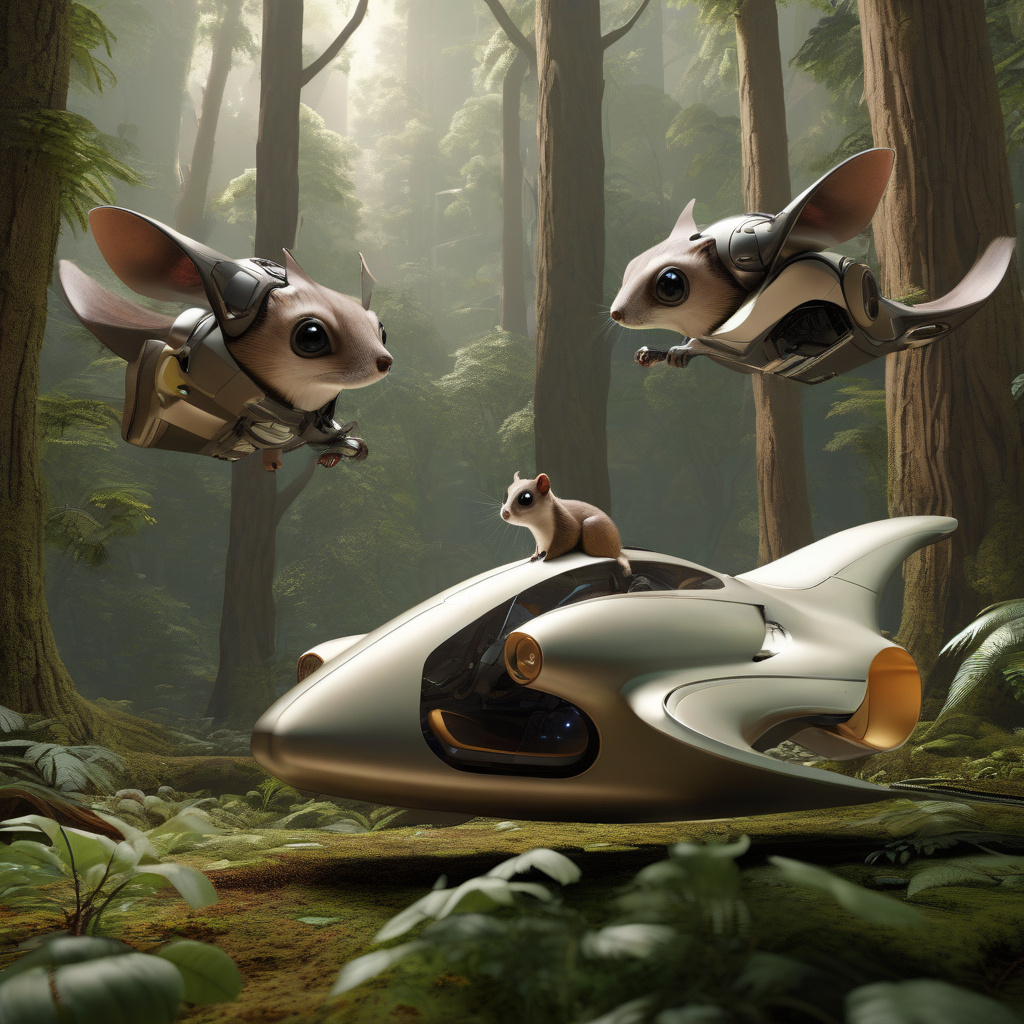Flying Squirrels’ Tail Mechanics Drive Breakthrough in Bionic Drones and Robots
Scientists in Switzerland have turned to a rare flying squirrel’s remarkable treetop agility to develop cutting-edge advancements in bionic drones and robots. Drawing inspiration from nature is not a new concept in the world of robotics and engineering, but the latest research focusing on the flying squirrel’s tail mechanics has opened up a realm of possibilities for aerial technology.
The study, led by a team of researchers at the Biorobotics Laboratory of the Swiss Federal Institute of Technology Lausanne (EPFL), delved deep into understanding how flying squirrels use their tails to steer and navigate through dense forests with unparalleled precision. By closely observing and analyzing the biomechanics of these elusive creatures, scientists have unlocked the key to enhancing the maneuverability and control of drones and robots in complex environments.
One of the most fascinating aspects of the flying squirrel’s tail mechanics is its ability to function both as an aerodynamic stabilizer and a dynamic control surface. The tail plays a crucial role in adjusting the animal’s orientation mid-flight, allowing for swift and agile movements amidst obstacles such as branches and foliage. By mimicking this dual-purpose functionality, researchers have successfully incorporated similar tail mechanisms into the design of bionic drones and robots.
The implications of this breakthrough are vast and promising. Imagine drones that can navigate through cluttered urban landscapes with ease, or robots capable of swiftly adapting to changing terrains in search and rescue missions. By harnessing the natural adaptations of the flying squirrel, engineers are revolutionizing the field of robotics and pushing the boundaries of what is possible.
Furthermore, the integration of flying squirrel-inspired tail mechanics goes beyond just enhancing maneuverability. These advancements also contribute to the overall efficiency and stability of aerial vehicles. By utilizing biomimicry, researchers have been able to optimize energy consumption and increase the endurance of drones, making them more practical for a wide range of applications.
The success of this research highlights the importance of looking to nature for innovative solutions to complex engineering challenges. Nature has evolved over millions of years to perfect designs that are efficient, effective, and sustainable. By studying and replicating these designs, scientists can create technology that not only meets human needs but also aligns with the principles of the natural world.
As we move forward into an era of increasingly advanced robotics and autonomous systems, the lessons learned from flying squirrels’ tail mechanics remind us of the power of bioinspiration. By tapping into nature’s wisdom, we can unlock new possibilities and shape a future where man-made creations seamlessly coexist with the beauty and efficiency of the natural world.
In conclusion, the breakthrough in bionic drones and robots driven by flying squirrels’ tail mechanics represents a significant milestone in the field of robotics. By emulating nature’s design principles, researchers are paving the way for a new generation of aerial technology that is agile, efficient, and versatile. As we continue to explore the depths of biomimicry, the potential for innovation and discovery remains boundless.
flying squirrels, tail mechanics, bionic drones, robots, biomimicry












